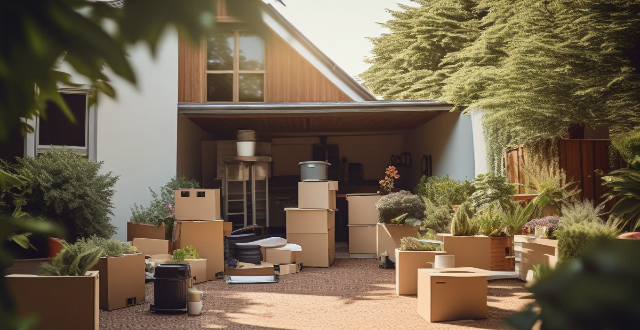This article provides tips and tricks for creating an organized and functional storage system at home. It suggests assessing your needs, choosing the right storage solutions, organizing your space, and maintaining your system over time. The article also emphasizes the importance of regular decluttering, reassessing your needs periodically, keeping your system organized, and experimenting with new storage solutions.

How to Implement a Quick and Efficient Storage System at Home
Introduction
Are you tired of clutter and disorganization in your home? Do you want to implement a quick and efficient storage system that will help you keep everything in its place? If so, then this guide is for you. In this article, we will discuss some tips and tricks that can help you create an organized and functional storage system at home.
Step 1: Assess Your Needs
Before implementing any storage system, it's important to assess your needs. Start by taking inventory of all the items you need to store. This will help you determine the type and amount of storage space required. Here are some questions to consider:
- What items do you need to store?
- How often do you use these items?
- Do you have any seasonal items that require storage?
- Do you have any large or bulky items that require special storage solutions?
Answering these questions will help you identify the type and amount of storage space required.
Step 2: Choose the Right Storage Solutions
Once you have assessed your needs, it's time to choose the right storage solutions. There are many different types of storage solutions available, including shelves, cabinets, drawers, baskets, and bins. Here are some tips for choosing the right storage solutions:
- Consider the size and weight of the items you need to store. Heavier items may require sturdy shelves or cabinets.
- Think about the frequency of use. Items that are used frequently should be stored in easily accessible locations.
- Consider the aesthetics of your home. Choose storage solutions that complement your decor and style.
- Don't forget about vertical space. Wall-mounted shelves or hanging organizers can be great options for small spaces.
Step 3: Organize Your Space
Now that you have chosen the right storage solutions, it's time to organize your space. Here are some tips for organizing your space:
- Group similar items together. This will make it easier to find what you need when you need it.
- Use labels or tags to identify items. This will save time and reduce frustration when searching for items.
- Create designated zones for specific activities. For example, designate a zone for cooking, another for cleaning, and another for relaxation.
- Keep frequently used items within easy reach. This will save time and effort when accessing these items.
Step 4: Maintain Your System
Finally, it's important to maintain your storage system over time. Here are some tips for maintaining your system:
- Regularly declutter your space. Get rid of items that you no longer need or use.
- Reassess your needs periodically. As your life changes, so too may your storage needs.
- Keep your system organized. Make sure everything has a designated place and put things back where they belong after use.
- Don't be afraid to experiment with new storage solutions. What works for one person may not work for another, so don't be afraid to try new things until you find what works best for you.